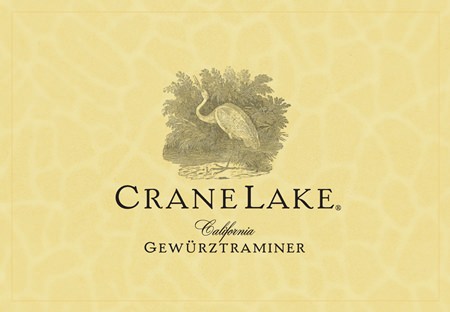It’s that time of year when most Americans celebrate the 1776 Declaration of Independence which announced, among other things, that the thirteen American states could manage quite well on their own without help from Great Britain. So the Fourth of July seems a good enough reason to sample a couple of American wines. And by the way, do you know how many American states have wineries? The answer is, you might be surprised to know, almost all of them.
Far be it from me to bore you with statistics so early in the piece, but here’s an interesting one. In 1970, there were about four hundred wineries in the USA. Today there are over five thousand. New wineries are evidently opening at the rate of several hundred per year, although many of them are small and family owned outfits. Some, especially in the northern states are not much more than one-man-shows.

For many people and especially for Europeans, American wine means California, which produces about 90% of all the wine made in the USA. The other three significant wine-producing states are Washington, Oregon and New York though you’ll be hard-pressed to find their wines around here. When Franciscan monks settled in Alta California and started making wine there, it was probably nothing more than rustic plonk. By the nineteenth century, Californian wines were vastly improved and in the 1870’s the state was producing more than two million gallons of wine every year, some of it of exceptional quality. In 1880, Robert Louis Stevenson (of Treasure Island fame) evidently described Californian wines as “bottled poetry”. However, he was on his honeymoon at the time and possibly feeling more romantic than usual. Today, California has over 2,000 wineries and it has been claimed that California’s vineyards earn more bucks than the movie studios of Hollywood.
American wine regulations are not as stringent as those in most European countries with the result that American wine-makers have much more freedom to experiment with grapes and locations. Many wine-makers prefer to use trade names for their products, such as Stags Leap or the jokey Cardinal Zin, referring to California’s ubiquitous Zinfandel grape. In Thailand, American wines have always been much more expensive than European, Chilean and Australian wines and the increase in taxes last year hasn’t helped. There is now a staggering difference between the prices of American wine on home ground and the price you have to pay for them here.
Now I’ll be the first to acknowledge that California produces some world-class wines even though they tend to have world-class price tags. However, the most popular wines in California are of the “extreme value” end of the market such as the Charles Shaw brand, available at Trader Joe’s grocery stores in California for a mere $1.99 per bottle, earning them the nickname Two Buck Chuck. There are hundreds of Californian wines made to sell at rock-bottom prices but unfortunately they translate into comparatively high prices in Thailand with the result that cheap American wines turn out to be very expensive for what you actually get. Anyway, this week we have two wines from Crane Lake, an award-winning winery which produces a wide range of varietals. In California they sell for three or four dollars each, the equivalent of about Bt. 120 a bottle.
Crane Lake Gewürztraminer 2012 (white) California, USA (Bt. 660 @ Friendship)
The Traminer is one of Europe’s most ancient grapes and the name Gewürztraminer literally means “spicy Traminer” or “perfumed Traminer”. Although Gewürztraminer is grown in Australia, Canada, Italy and the USA the grape reaches its finest expression in the Alsace region of Northern France. It produces wines with high natural sugar and with a pronounced bouquet of lychee and white fruit.
This is a pale straw colour and has a very pretty floral aroma of rose, lychee, peach and apricot. Strangely enough, the aroma feels slightly synthesized to me. It’s very mild on the palate with distinct floral flavours which reminded me of orange blossom and pineapple and there’s quite a decent finish. The publicity describes the wine as off-dry but to my taste it’s distinctly on the sweet side though not quite sweet enough to use a dessert wine. It would make a pleasant swigger for a Sunday afternoon if you haven’t much else to do. Sweet-toothed friends may well find this wine very enjoyable and it’s only 12% alcohol content. It could work quite well with some Thai dishes because the sweetness would offset any spicy tastes.
Crane Lake Merlot 2012 (red) California, USA (Bt. 660 @ Friendship)
In some ways, this strikes me as a better wine than the Gewürztraminer because it’s more interesting. Many bargain-priced Californian reds are churned out for the indiscriminating masses who presumably just want something to knock back with their hamburgers. However, the taste of this wine puts it a few notches up the scale, partly because there’s a pleasing dash of acidity on the palate which immediately brings the fruit into better focus. It has a very attractive aroma with plenty of fruit, although it feels slightly “manipulated” to my nose. I am not quite sure why, but perhaps I am just being too fussy. You’ll probably recognise the smells of ripe red fruits with blackberry, cherry and plum and you might also pick up that faint earthy smell that you sometimes find in Merlot.
With extremely soft tannins, this wine is quite an attractive easy drinker but it improves if you drink it chilled, because the lower temperature gives the body a better sense of firmness. At just 12.5% alcohol content, the wine would make a good partner for light dishes, vegetarian dishes and yes, hamburgers too, if that’s your scene. One American reviewer suggested that you could drink this Merlot with pasta but I had my doubts, because pasta nearly always works best with slightly sharp Italian reds. However, just to test the claim, I made a Tagliatelle Carbonara, brightened up with chopped red-hot Thai peppers and tastefully decorated with a bergamot leaf. I have to admit that the wine and the pasta did seem to work together. But only just.




